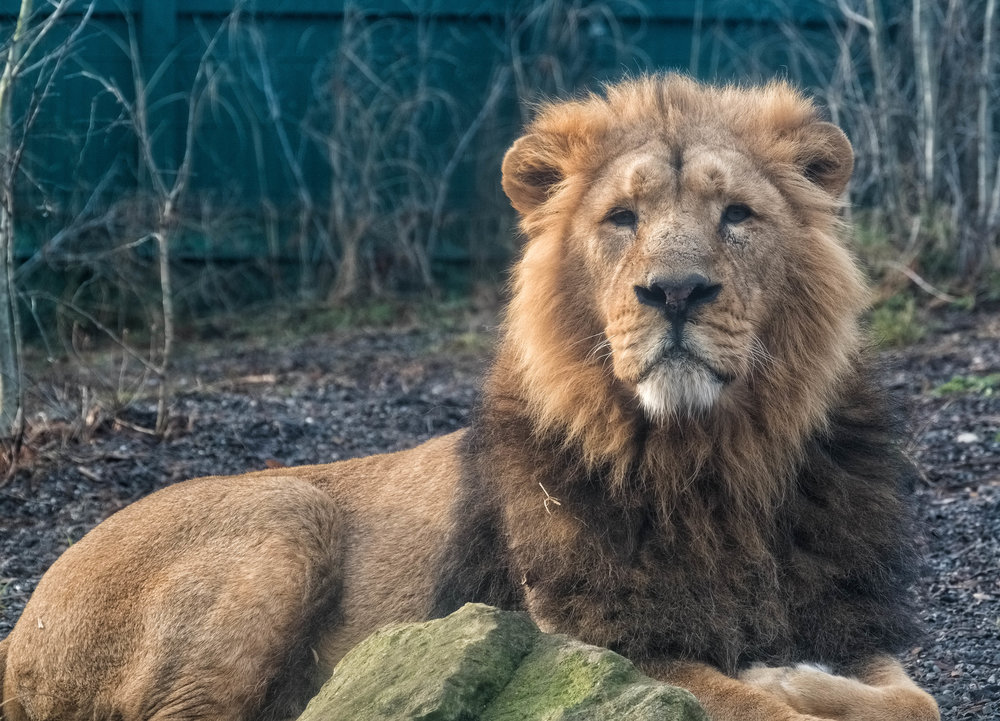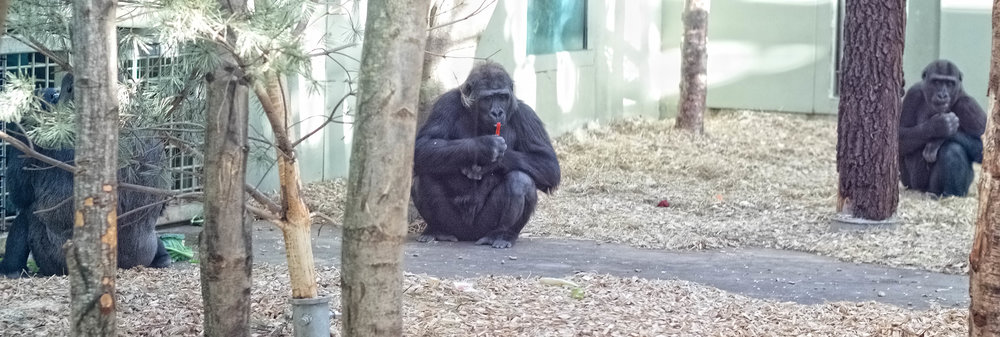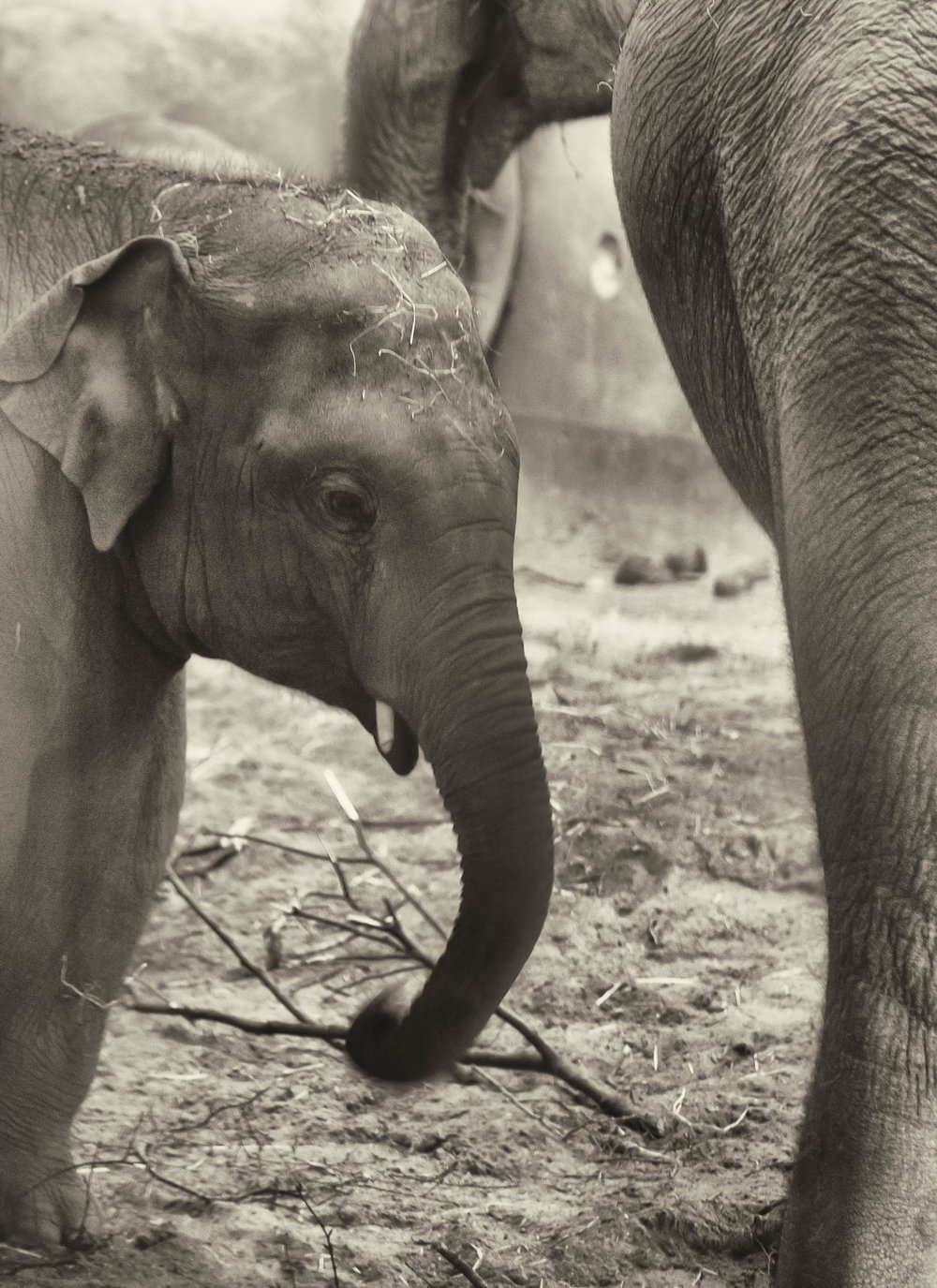Now that even my one grandchild is grown up, visits to Dublin Zoo are relatively infrequent. Perhaps once every three or four yours is the most it would be. Also, in these enlightened days animals are kept in larger enclosures, outdoors where possible, and so visits to the zoo involve a lot of walking around. At one stage, I thought nothing of lugging a pile of Nikon professional gear around a zoo, involving a professional DSLR and lenses.
Nowadays, I keep only a D800E and some lenses , if only for nostalgia. I mainly use Leicas, but, in my experience, the M is not really suitable for this type of work. I have no interest in the SL system, for the same reason that I do not use the D800E and pro lenses. When I recently traded in some Nikon gear, I replaced it with their much lighter Fujifilm equivalents, so the choice for my recent zoo visit, my first in about 3 or 4 years, seemed obvious.
Companions
My companions for the day were the X-Pro 2 with a 50-140mm zoom (and 1.4 teleconvertor giving a maximum reach over 290mm in ‘real money’), together with an X-T1 with a the 56mm f/1.2 mounted (about 84mm in full-frame equivalence). The 16mm f/1.4 I didn’t use but a 23mm f/2 came into play at the end of the visit. For convenience I have called the main combinations X-Pro 2 combo and X-T 1 combo.
My first shot with the X-Pro 2 combo convinced me that I had taken the right decision as regards equipment:
Just across from the lion enclosure there was a much smaller space for macaques. I used the X-T1 combo at f/1.2 for this shot of a young macaque. I am really pleased with this, even though the 56mm was slower to focus than the zoom on the X-Pro 2. The lens shows remarkable sharpness wide open.
The little macaque spent a lot of its time cowering behind its mother and this shot, also at f/1.2, shows that, even though the narrow depth of field and some intervening vegetation renders the mother into just a shape, which works for me.
My next shot was at the enclosure of the snow leopards. Even though there had been some slight snow in Dublin the night before, the snow leopards were indoors, but it was possible to get a shot through a narrow window with the X-Pro 2 combo.
Next up were the orangutans. It was feeding time when I arrived. The first shot with the X-Pro 2 plus large zoom shows some face (eating) movement and glass reflections, but I like it as it shows exactly what the orangutan was doing.
For the next shot I took a photo of one of the orangutan at the back of the enclosure again with the large zoom. As the shot was straight on and at a considerable focal length I had no difficulty with reflections.
I wandered over to the sea lions, X-Pro 2 combo in hand. First here is a sea lion waiting for feeding time to commence.
When the food was thrown into the pool by the keeper, mayhem ensued as the sea lions fought with one another and with the hovering gulls and herons.
After this sea lion had successfully obtained some food, it went on a victory lap around the pool.
While these shots are acceptable, it was extremely difficult to get a great shot as the sea lions came through the water. I had the same difficulty some years ago trying to shoot whales and dolphins breaching off the coast of South Africa.
By coincidence, my next stop was at the hippopotamus outdoor pool where a large hippo was, occasionally, putting its head above the water. There was also a wire fence, but I did manage to get this shot at f/2.8 (to make the fence disappear) with the X-Pro 2 combo.
I like this, as it seems that the Hippo is looking sideways at the camera as it breaks the water.
One animal group which was in the wide open spaces, along with some ostriches, was this trio of rhinoceros ‘musketeers’
One female rhinoceros was, however, indoors with a young calf and I managed to get this close up of her horn with the X-T 1 combo. I have done this in black and white to eliminate some slight glass reflections.
If you were this close to a rhino’s horn in the wild you would start feeling very worried!
Chimpanzees are usually photogenic but when I got to their enclosure they seemed to be missing. I might also mention at this stage that the zoo’s birds were not on view because of an outbreak of avian flu.
I visited the gorilla enclosure and they were indoors behind heavy glass (probably the origin of the term ‘gorilla glass’). This young gorilla eyed me suspiciously as it waited for feeding time.
When feeding started there was a rush for places, just like humans trying to get the best seat in a restaurant.
Then I noted a definite ‘pecking order’ among the gorillas, based on size. This shot attempts to portray that. I did note that the keepers threw some food in the direction of the smaller members of the gorilla group to compensate for that.
The gorilla in the middle surreptitiously grabbed some of the food thrown over its shoulder by the largest member of the group on the left.
Next up was a mangabey having its lunch. I used the X-T 1 combo at f1.2 and was very pleased with my first shot, focussing on the mangabey’s face.
This shot was so pleasing that I took another.…
I am not sure which one of these I like better. The 56mm f/1.2 lens is intended as a portrait lens, of course.
Next up was an animal that I failed to see on my visit to Kruger National Park in South Africa some years ago, the African wild dog. In this case it was the Painted Dog, which is undergoing a breeding programme in Dublin Zoo.
There was a fence around the fairly lively dog pack. I waited until one of them sat down and I then took this shot at f/2.8 to avoid the fence. You can see some swirly bokeh in this shot, reminding me of my favourite Leica Summar lens.
Also behind a fence, was a group of Red River Hogs (a new one to me) . This one was rooting around at the base of a tree — which, I suppose, is what hogs do. This was shot at f/4.
On my way to the Elephant House, I passed this little native inhabitant of the Phoenix Park where Dublin Zoo is located.
At the Elephant House I was tempted to use the 16mm f/1.4, but I was worried about glass reflections and so I kept the 56mm f/1.2 on the X-T 1 and managed to get this shot of a young elephant. Once again I have converted to black and white to eliminate reflections. The larger the view/animal the more likely that glass reflections will arise.
My next port of call was the Reptile House which had very low light levels, shy inhabitants and some colour casts from lights. I used the X-T 1 combo, largely wide open or nearly there
.jpg)
.jpg)
.jpg)
.jpg)
The green crested lizard had, for some a reason, a green light in its glass case. I have not altered that because of the green colour being its most outstanding feature. The mangrove monitor also had a green light in it’s enclosure, but the creature is a brownish colour, so I have converted its photo to black and white.
Finally, I visited the South American House where I came across this group of fluffy little Bolivian squirrel monkeys. They were charming little creatures who appeared to have a very gentle manner. This one was shot with the X-T 1 combo at about f/1.8.
On my way out from the zoo, I observed some architectural features that have survived since I first visited the zoo as a child in the early 1950s, such as this thatched entrance house.
And this building from the Victorian era.
My final shot is taken with the 23 mm f/2 lens on the X-Pro 2. The light on the central lake so was so good, I could not resist this.
.jpg)
I greatly enjoyed my day at the zoo. Photographically speaking, I am not always after cold technical perfection, but rather pictures which convey a story or a good impression of what I saw. Speaking purely from a technical perspective, though, I feel that the Fujifilm kit performed admirably and I did not miss my Nikon professional gear at all.
_______________
- Subscribe to Macfilos for free updates on articles as they are published. Read more here
- Want to make a comment on this article but having problems? Please read this


























Thank you for sharing your outing so expressively – some really human-looking animals there! I really want a macaque for a friend, but I’ll admire the courage of the ostriches from a distance (or did they just have their heads in the ground and not see the rhinoes?!) My take on light gear would go in the direction of Sony NEXes and Zeiss glass, but it was intersting to read how you chose.
Thanks John. Both of my daughters and my grandson are in love with that little macaque. I have a photo of the ostriches which I can send to Mike for you. I also have a photo that I took at a zoo in the Middle East as a large male ostrich charged towards me with a very threatening expression. Will send that one too.
A lot of people have gone different ways for small light systems. The reason why I like Fuji gear is that they have replicated the traditional top plate design of older film cameras and I am very comfortable with that.
William
Thank you ! Looks like great way spend day w cameras u enjoy.
Thanks John. Yes, the Fujis are very nice handling cameras. I was a bit ‘ring rusty’ myself for photographs of this kind, but my technique came back to me as I walked around the zoo.
William